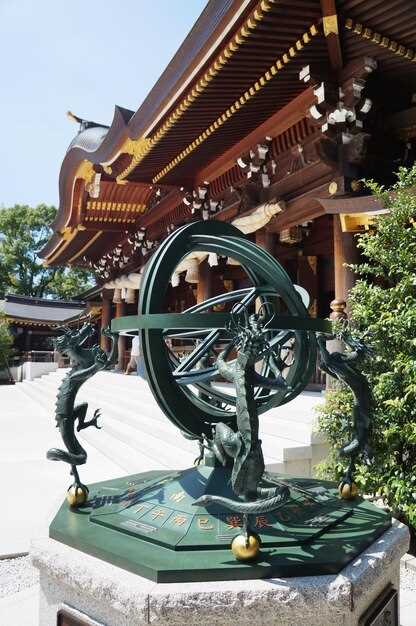Arrive before opening, pick up official map, and plan a 90-minute loop from atrium through core galleries.
Where to locate best exhibit items? On second floor, evolution gallery anchors their line, with eomaia in central display and a well-lit diorama tracing emergence.
Free audio tours and docent sessions cater to traveling audience groups; official schedule shows times morning and afternoon, while advance booking is advised for popular sessions.
Features across collection include rich fossil finds, their display cases, and interactive spots that invite different learning styles; find gift on second floor near atrium for a souvenir.
When moving between galleries, follow floor signs to exit routes and avoid crowding; official exit leads to a compact gift path and a final showcase of additional attractions. If you compare with other museums nearby, this collection delivers rich context for a single visit.
Explore the National Natural History Museum of China: Practical Travel Guide and Guided Tours
Buy tickets online ahead of arrival to save time and avoid queues. Carry QR codes on your phone or printed version for admission at ground-floor counters. Official entrances open early; consider a guided tour to begin your visit with key attractions in a single pass.
Must-see sections include fossils and mammoths; biology-focused galleries show organisms, from microfauna to megafauna. Bright yellow signage marks routes on each floor, including interactive displays on second floor, helping visitors navigate with minimal wandering.
Guided tours run in multiple languages and last about 60 minutes. Meet at reception on main level; tours cover major attractions including fossils, mammoths, ecological displays. For families or schools, guided options suit different audiences; their routes include a mix of inside rooms and outdoor spaces, with opportunities to ask questions from trained facilitators.
Getting there is easy by taxi from hotels around central Beijing or by subway to a nearby station, then a short walk. Admission costs vary by age; official rates apply for adults, students, and seniors. For budget traveling, look for combo tickets that include access to special exhibitions where available. Best value often comes from booking online tickets with a time slot to avoid lines.
On-campus dining options include quick bowls, snacks, and beverages; there are several food stalls and vending machines on each floor. Family-friendly facilities, including restrooms and stroller access, make life easier for visitors with kids. Free lockers near entrances provide storage for bags; staff can help with directions from main entrance to each wing.
Experience spans one of Asia’s richest biological collections; you will find amazing displays that highlight species diversity and ecological relationships. Begin on ground floor, then move inside to see different habitats across floors; exit near main doors for simple departure.
For authoritative overview, see Britannica: Britannica overview.
Ticketing, Pricing, and Admission Options
Recommendation: Purchase advance tickets online to skip line and guarantee main admission, then plan a guided visit to maximize your experience.
Guided options open access to fossils, species, and mammoths in a prehistoric corridor; this adds value for audience seeking depth. A comprehensive collection showcases earths landscapes, evolutionary biology, reptiles, and evolution of life across epochs, with features highlighting ancient ocean habitats and another immersive gallery. This option suits audience across varied interests. This route supports a deeper, more complete exploration of main themes.
Prices: adult 120 CNY, student 60 CNY, child 0-6 free, seniors 70 CNY; family pack 260 CNY (two adults and two children). Tickets can be bought in advance; discounts apply for groups of 15 or more. admission grants access to main exhibits and special galleries.
Lockers for storage are near exit corridors for belongings; accessibility features support all visitors, including those needing ramps and seating. tianqiao transfer points and line signage help locate entry and exit routes, with multilingual cues for international guests.
Plan a visit that starts with fossil halls, then another hall focusing on mammals such as mammoths, followed by ocean and biology displays; a well-paced route provides a complete overview of main themes and features, making this experience amazing, and ensures you exit with a deeper understanding of earths history and the people who study it.
Hours, Closures, and the Best Times to Visit

Arrive at opening around 9:30 to enjoy popular exhibits before crowds form; second benefit is shorter queues for dinosaurs, mammoths, and eomaia when you join guided routes from front entrance.
Official hours are 9:30–17:00; last admission 16:30; closures include Mondays, with occasional holiday shifts posted at entrance.
Best times to visit: Tue–Fri mornings, around 9:45–12:00; avoid weekends and public holidays when crowds peak; queue times typically 10–20 minutes.
Getting there: taxi from station or central hub is convenient; drop-off near main entrance; yellow floor arrows guide visitors through ecological zones and evolutionary exhibits.
Find eomaia, organisms, and ecological context on second floor; rich context for life-science fans; mammals and dinosaurs anchor famous exhibit clusters inside bright halls; guided tours lasting about 60 minutes provide added context for visitors.
Visiting from another city? Plan 1–2 hours to cover highlights, then return planning a second visit to explore areas not covered on first pass; check official site for closures and special hours before arrival.
Must-See Exhibits and Route Planning

Admission should be bought online; arrive early; this must-do starts on Floor 2 with dinosaurs and fossils before crowds.
Next, prehistoric galleries showcase evolutionary biology displays; features highlight how life evolved, with dinosaurs, fossils, and life-size diorama scenes.
Floor-by-floor plan: Floor 2 houses dinosaurs, giant skeletons, fossil cases; move to Floor 3 for biodiversity and ancient life dioramas; finish on Floor 1 with origins of biology and interactive exhibits.
For practical travel, take taxi from tianqiao district; official hours vary; admission desks open mornings; check official site for updates; allocate 90–120 minutes for core displays; gift shop at exit offers souvenirs.
Dining near campus includes quick bites and casual cafés; inside campus cafe serves snacks, coffee, and light meals; food options around offer china-inspired snacks after long visit; wandering visitors can grab water and snacks before heading back into travel plans.
Where to start? Use official maps at admission; this route suits traveling families, visitors, and students; language options include English audio guides; inside galleries, signs help you navigate; this plan maximizes amazing features and opportunities to photograph fossils, dinosaurs, biology displays; visit now for a memorable experience.
Guided Tours: Schedules, Language Options, and How to Join
Advance booking required for English guided tour at 10:00; 75 minutes; meeting point floor 2 near gift shop. Available languages: English, Mandarin, Japanese, Korean, French, German. Additional slots: 11:30, 14:00, 16:00. Groups up to 20; some free slots for students with valid ID.
Joining steps: visit official portal, pick language, select slot, confirm. On arrival, present booking reference and photo ID at guard desk. Storage lockers near floor 2 provide secure storage for bags. Elevator access to floor 2; wheelchair friendly. Gift shop on floor 2 offers souvenirs and guidebooks.
Inside galleries, fossils, dinosaurs, and mammoths illustrate evolution through prehistoric life; reptiles, organisms, and other exhibits enrich ecological biology with rich themes from diverse ecosystems and species.
Best experience comes when pairing English or Mandarin tours with 75-minute length; book ahead through official portal; free slots reserved for educational groups. Arrive fifteen minutes early; Where to join is clearly marked on floor 2 near gift shop. Afterward, taxis gather near entrance; hotels nearby provide easy return options. Storage lockers help with bags.
Getting There, Accessibility, Food, and Photography Rules
Take official taxi from central districts to main entrance; door‑to‑door duration 60–90 minutes depending on traffic; use yellow signage for directions and carry address in local characters if needed; prepare to show booking or map link on mobile to avoid misunderstandings.
- Accessibility: entry points include ramp access; elevators connect all floors; wide doors in major corridors; seating in galleries; restrooms on every level; mobile assistance available on request; staff can guide to lifts and accessible routes.
- Storage: lockers near security area hold coats and bags during visits; bring compact bags only to speed through checkpoints; large bags may require check or storage elsewhere.
- Food: on‑site cafe near atrium offers quick meals, sandwiches, soups, hot drinks; hours typically 09:00–17:00; price range moderate; vending machines and snack options near storage zone; visitors may store bags and then return to dining area for meals.
- Water: free water stations available; outside meals discouraged inside galleries to protect exhibits.
- Photography rules: non‑flash photography allowed in most indoor galleries; no tripod or professional lighting without prior permission from official staff; avoid obstructing audience flow or viewing lines; flash near precious specimens strictly prohibited.
- Access for audience: feel free to capture memories around main exhibit clusters, but respect signposted restricted areas; in interactive spots, follow staff directions for safety and preservation.
Key experiences include timelines of life on Earth, with displays featuring mammoths, reptiles, and a broad collection of organisms across biology and ocean themes. Inside, attractions span species from small invertebrates to large main exhibits; yellow signage guides paths between galleries and storage zones, helping visitors navigate sections focusing on world biodiversity, their features, and evolution. Free educational talks and demonstrations occur at scheduled minutes intervals; beginning moments are especially amazing for younger audiences and first‑time visitors. For a smooth flow, begin at reception, then proceed to a sequence of climate‑related exhibits, timeline corridors, and main collections before scrolling toward immersive, interactive spaces. Hotels in this area offer convenient access for an early start or late finish, while taxi remains fastest option for punctual arrivals. An official plan can help you optimize your visit to cover themes such as ocean life, mammals, and terrestrial biology within a single day.

 Explore the National Natural History Museum of China – A Complete Travel Guide" >
Explore the National Natural History Museum of China – A Complete Travel Guide" >



















